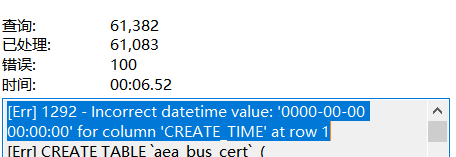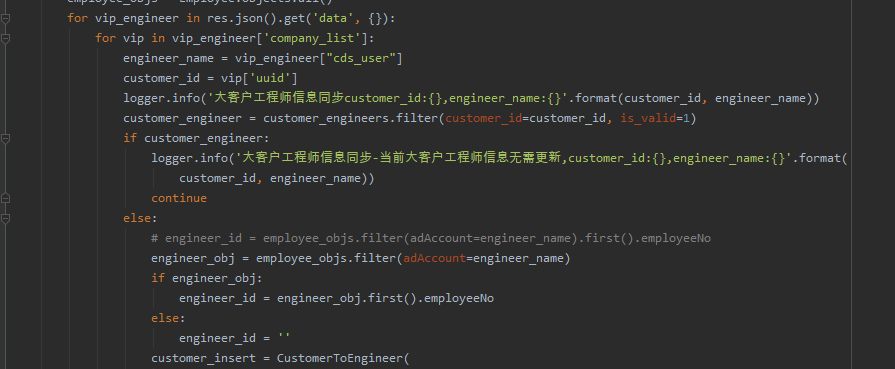如何保证自满足
为了验证头文件设计的自满足原则,实现文件的第一条语句必然是包含其对应的头文件。
反例:
// cppunit/TestCase.cpp
#include "cppunit/core/TestResult.h"
#include "cppunit/core/Functor.h"
// 错误:没有放在第一行,无法校验其自满足性
#include "cppunit/core/TestCase.h"
namespace
{
struct TestCaseMethodFunctor : Functor
{
typedef void (TestCase::*Method)();
TestCaseMethodFunctor(TestCase &target, Method method)
: target(target), method(method)
{}
bool operator()() const
{
target.*method();
return true;
}
private:
TestCase ⌖
Method method;
};
}
void TestCase::run(TestResult &result)
{
result.startTest(*this);
if (result.protect(TestCaseMethodFunctor(*this, &TestCase::setUp)))
{
result.protect(TestCaseMethodFunctor(*this, &TestCase::runTest));
}
result.protect(TestCaseMethodFunctor(*this, &TestCase::tearDown));
result.endTest(*this);
}
...正例:
// cppunit/TestCase.cpp
#include "cppunit/core/TestCase.h"
#include "cppunit/core/TestResult.h"
#include "cppunit/core/Functor.h"
namespace
{
struct TestCaseMethodFunctor : Functor
{
typedef void (TestCase::*Method)();
TestCaseMethodFunctor(TestCase &target, Method method)
: target(target), method(method)
{}
bool operator()() const
{
target.*method();
return true;
}
private:
TestCase ⌖
Method method;
};
}
void TestCase::run(TestResult &result)
{
result.startTest(*this);
if (result.protect(TestCaseMethodFunctor(*this, &TestCase::setUp))
{
result.protect(TestCaseMethodFunctor(*this, &TestCase::runTest));
}
result.protect(TestCaseMethodFunctor(*this, &TestCase::tearDown));
result.endTest(*this);
}
...
override和private
所有override的函数(除override的virtual析构函数之外)都应该是private的,以保证按接口编程的良好设计原则。
反例:
// html-parser/filter/AndFilter.h
#ifndef EOIPWORPIO_06123124_NMVBNSDHJF_497392
#define EOIPWORPIO_06123124_NMVBNSDHJF_497392
#include "html-parser/filter/NodeFilter.h"
#include <list>
struct AndFilter : NodeFilter
{
void add(NodeFilter*);
// 设计缺陷:本应该private
OVERRIDE(bool accept(const Node&) const);
private:
std::list<NodeFilter*> filters;
};
#endif正例:
// html-parser/filter/AndFilter.h
#ifndef EOIPWORPIO_06123124_NMVBNSDHJF_497392
#define EOIPWORPIO_06123124_NMVBNSDHJF_497392
#include "html-parser/filter/NodeFilter.h"
#include <list>
struct AndFilter : NodeFilter
{
void add(NodeFilter*);
private:
OVERRIDE(bool accept(const Node&) const);
private:
std::list<NodeFilter*> filters;
};
#endifinline
避免头文件中inline
头文件中避免定义inline函数,除非性能报告指出此函数是性能的关键瓶颈。
C++语言将声明和实现进行分离,程序员为此不得不在头文件和实现文件中重复地对函数进行声明。这是C/C++天生给我们的设计带来的重复。这是一件痛苦的事情,驱使部分程序员直接将函数实现为inline。
但inline函数的代码作为一种不稳定的内部实现细节,被放置在头文件里,其变更所导致的大面积的重新编译是个大概率事件,为改善微乎其微的函数调用性能与其相比将得不偿失。
除非有相关profiling性能测试报告,表明这部分关键的热点代码需要被放回头文件中。
但需要注意在特殊的情况,可以将实现inline在头文件中,因为为它们创建实现文件过于累赘和麻烦。
virtual析构函数空的
virtual函数实现C++11的default函数
鼓励实现文件中inline
对于在编译单元内部定义的类而言,因为它的客户数量是确定的,就是它本身。另外,由于它本来就定义在源代码文件中,因此并没有增加任何“物理耦合”。所以,对于这样的类,我们大可以将其所有函数都实现为inline的,就像写Java代码那样,Once & Only Once。
以单态类的一种实现技术为例,讲解编译时依赖的解耦与匿名命名空间的使用。(首先,应该抵制单态设计的诱惑,单态其本质是面向对象技术中全局变量的替代品。滥用单态模式,犹如滥用全局变量,是一种典型的设计坏味道。只有确定在系统中唯一存在的概念,才能使用单态模式)。
实现单态,需要对系统中唯一存在的概念进行封装;但这个概念往往具有巨大的数据结构,如果将其声明在头文件中,无疑造成很大的编译时依赖。
反例:
// ne/NetworkElementRepository.h
#ifndef UIJVASDF_8945873_YUQWTYRDF_85643
#define UIJVASDF_8945873_YUQWTYRDF_85643
#include "base/Status.h"
#include "base/BaseTypes.h"
#include "transport/ne/NetworkElement.h"
#include <vector>
struct NetworkElementRepository
{
static NetworkElement& getInstance();
Status add(const U16 id);
Status release(const U16 id);
Status modify(const U16 id);
private:
typedef std::vector<NetworkElement> NetworkElements;
NetworkElements elements;
};
#endif受文章篇幅的所限,NetworkElement.h未列出所有代码实现,但我们知道NetworkElement拥有巨大的数据结构,上述设计导致所有包含NetworkElementRepository的头文件都被NetworkElement所间接污染。
此时,其中可以将依赖置入到实现文件中,解除揭开其严重的编译时依赖。更重要的是,它更好地遵守了按接口编程的原则,改善了软件的扩展性。
正例:
// ne/NetworkElementRepository.h
#ifndef UIJVASDF_8945873_YUQWTYRDF_85643
#define UIJVASDF_8945873_YUQWTYRDF_85643
#include "base/Status.h"
#include "base/BaseTypes.h"
#include "base/Role.h"
DEFINE_ROLE(NetworkElementRepository)
{
static NetworkElementRepository& getInstance();
ABSTRACT(Status add(const U16 id));
ABSTRACT(Status release(const U16 id));
ABSTRACT(Status modify(const U16 id));
};
#endif其实现文件包含NetworkElement.h,将对其的依赖控制在本编译单元内部。
// ne/NetworkElementRepository.cpp}]
#include "transport/ne/NetworkElementRepository.h"
#include "transport/ne/NetworkElement.h"
#include <vector>
namespace
{
struct NetworkElementRepositoryImpl : NetworkElementRepository
{
OVERRIDE(Status add(const U16 id))
{
// inline implements
}
OVERRIDE(Status release(const U16 id))
{
// inline implements
}
OVERRIDE(Status modify(const U16 id))
{
// inline implements
}
private:
typedef std::vector<NetworkElement> NetworkElements;
NetworkElements elements;
};
}
NetworkElementRepository& NetworkElementRepository::getInstance()
{
static NetworkElementRepositoryImpl inst;
return inst;
}此处,对NetworkElementRepositoryImpl类的依赖是非常明确的,仅本编译单元内,所有可以直接进行inline,从而简化了很多实现。
匿名namespace
匿名namespace的存在常常被人遗忘,但它的确是一个利器。匿名namespace的存在,使得所有受限于编译单元内的实体拥有了明确的处所。
自此之后,所有C风格并局限于编译单元内的static函数和变量;以及类似Java中常见的private static的提取函数将常常被匿名namespace替代。
请记住匿名命名空间也是一种重要的信息隐藏技术。在实现文件中提倡使用匿名namespace, 以避免潜在的命名冲突。
如上例,NetworkElementRepository.cpp通过匿名namespace,极大地减低了其头文件的编译时依赖。
struct VS. class
除了名字不同之外,class和struct唯一的差别是:默认可见性。这体现在定义和继承时。struct在定义一个成员,或者继承时,如果不指明,则默认为public,而class则默认为private。
但这些都不是重点,重点在于定义接口和继承时,冗余public修饰符总让人不舒服。简单设计四原则告诉告诉我们,所有冗余的代码都应该被剔除。
但很多人会认为struct是C遗留问题,应该避免使用。但这不是问题,我们不应该否认在写C++程序时,依然在使用着很多C语言遗留的特性。关键在于,我们使用的是C语言中能给设计带来好处的特性,何乐而不为呢?
正例:
// hamcrest/SelfDescribing.h
#ifndef OIWER_NMVCHJKSD_TYT_48457_GSDFUIE
#define OIWER_NMVCHJKSD_TYT_48457_GSDFUIE
struct Description;
struct SelfDescribing
{
virtual void describeTo(Description& description) const = 0;
virtual ~SelfDescribing() {}
};
#endif反例:
// hamcrest/SelfDescribing.h
#ifndef OIWER_NMVCHJKSD_TYT_48457_GSDFUIE
#define OIWER_NMVCHJKSD_TYT_48457_GSDFUIE
class Description;
class SelfDescribing
{
public:
virtual void describeTo(Description& description) const = 0;
virtual ~SelfDescribing() {}
};
#endif更重要的是,我们确信“抽象”和“信息隐藏”对于软件的重要性,这促使我将public接口总置于类的最前面成为我们的首选,class的特性正好与我们的期望背道而驰(class的特性正好适合于将数据结构捧为神物的程序员,它们常常将数据结构置于类声明的最前面。)
不管你信仰那一个流派,切忌不能混合使用class和struct。在大量使用前导声明的情况下,一旦一个使用struct的类改为class,所有的前置声明都需要修改。
万恶的struct tag
定义C风格的结构体时,struct tag彻底抑制了结构体前置声明的可能性,从而阻碍了编译优化的空间。
反例:
// radio/domain/Cell.h
#ifndef AQTYER_023874_NMHSFHKE_7432378293
#define AQTYER_023874_NMHSFHKE_7432378293
typedef struct tag_Cell
{
WORD16 wCellId;
WORD32 dwDlArfcn;
} T_Cell;
#endif// radio/domain/Cell.h
#ifndef AQTYER_023874_NMHSFHKE_7432378293
#define AQTYER_023874_NMHSFHKE_7432378293
typedef struct
{
WORD16 wCellId;
WORD32 dwDlArfcn;
} T_Cell;
#endif为了兼容C并为结构体前置声明提供便利,如下解法是最合适的。
正例:
// radio/domain/Cell.h
#ifndef AQTYER_023874_NMHSFHKE_7432378293
#define AQTYER_023874_NMHSFHKE_7432378293
typedef struct T_Cell
{
WORD16 wCellId;
WORD32 dwDlArfcn;
} T_Cell;
#endif需要注意的是,在C语言中,如果没有使用typedef,则定义一个结构体的指针,必须显式地加上struct关键字:struct T_Cell *pcell,而C++没有这方面的要求。
PIMPL
如果性能不是关键问题,考虑使用PIMPL降低编译时依赖。
反例:
// mockcpp/ApiHook.h
#ifndef OIWTQNVHD_10945_HDFIUE_23975_HFGA
#define OIWTQNVHD_10945_HDFIUE_23975_HFGA
#include "mockcpp/JmpOnlyApiHook.h"
struct ApiHook
{
ApiHook(const void* api, const void* stub)
: stubHook(api, stub)
{}
private:
JmpOnlyApiHook stubHook;
};
#endif正例:
// mockcpp/ApiHook.h
#ifndef OIWTQNVHD_10945_HDFIUE_23975_HFGA
#define OIWTQNVHD_10945_HDFIUE_23975_HFGA
struct ApiHookImpl;
struct ApiHook
{
ApiHook(const void* api, const void* stub);
~ApiHook();
private:
ApiHookImpl* This;
};
#endif// mockcpp/ApiHook.cpp
#include "mockcpp/ApiHook.h"
#include "mockcpp/JmpOnlyApiHook.h"
struct ApiHookImpl
{
ApiHookImpl(const void* api, const void* stub)
: stubHook(api, stub)
{
}
JmpOnlyApiHook stubHook;
};
ApiHook::ApiHook( const void* api, const void* stub)
: This(new ApiHookImpl(api, stub))
{
}
ApiHook::~ApiHook()
{
delete This;
}通过ApiHookImpl* This的桥接,在头文件中解除了对JmpOnlyApiHook的依赖,将其依赖控制在本编译单元内部。
template
编译时依赖
当选择模板时,不得不将其实现定义在头文件中。当编译时依赖开销非常大时,编译模板将成为一种负担。设法降低编译时依赖,不仅仅为了缩短编译时间,更重要的是为了得到一个低耦合的实现。
反例:
// oss/OssSender.h
#ifndef HGGAOO_4611330_NMSDFHW_86794303_HJHASI
#define HGGAOO_4611330_NMSDFHW_86794303_HJHASI
#include "pub_typedef.h"
#include "pub_oss.h"
#include "oss_comm.h"
#include "pub_commdef.h"
#include "base/Assertions.h"
#include "base/Status.h"
struct OssSender
{
OssSender(const PID& pid, const U8 commType)
: pid(pid), commType(commType)
{
}
template <typename MSG>
Status send(const U16 eventId, const MSG& msg)
{
DCM_ASSERT_TRUE(OSS_SendAsynMsg(eventId, &msg, sizeof(msg), commType,(PID*)&pid) == OSS_SUCCESS);
return DCM_SUCCESS;
}
private:
PID pid;
U8 commType;
};
#endif为了实现模板函数send,将OSS的一些实现细节暴露到了头文件中,包含OssSender.h的所有文件将无意识地产生了对OSS头文件的依赖。
提取一个私有的send函数,并将对OSS的依赖移入到OssSender.cpp中,对PID依赖通过前置声明解除,最终实现如代码所示。
正例:
// oss/OssSender.h
#ifndef HGGAOO_4611330_NMSDFHW_86794303_HJHASI
#define HGGAOO_4611330_NMSDFHW_86794303_HJHASI
#include "base/Status.h"
#include "base/BaseTypes.h"
struct PID;
struct OssSender
{
OssSender(const PID& pid, const U16 commType)
: pid(pid), commType(commType)
{
}
template <typename MSG>
Status send(const U16 eventId, const MSG& msg)
{
return send(eventId, (const void*)&msg, sizeof(MSG));
}
private:
Status send(const U16 eventId, const void* msg, size_t size);
private:
const PID& pid;
U8 commType;
};
#endif识别哪些与泛型相关,哪些与泛型无关的知识,并解开此类编译时依赖是C++程序员的必备之技。
显式模板实例化
模板的编译时依赖存在两个基本模型:包含模型,export模型。export模型受编译技术实现的挑战,最终被C++11标准放弃。
此时,似乎我们只能选择包含模型。其实,存在一种特殊的场景,适时选择显式模板实例化(Explicit Template Instantiated),降低模板的编译时依赖。是能做到降低模板编译时依赖的。
反例:
// quantity/Quantity.h
#ifndef HGGQMVJK_892302_NGFSLEU_796YJ_GF5284
#define HGGQMVJK_892302_NGFSLEU_796YJ_GF5284
#include <quantity/Amount.h>
template <typename Unit>
struct Quantity
{
Quantity(const Amount amount, const Unit& unit)
: amountInBaseUnit(unit.toAmountInBaseUnit(amount))
{}
bool operator==(const Quantity& rhs) const
{
return amountInBaseUnit == rhs.amountInBaseUnit;
}
bool operator!=(const Quantity& rhs) const
{
return !(*this == rhs);
}
private:
const Amount amountInBaseUnit;
};
#endif// quantity/Length.h
#ifndef TYIW7364_JG6389457_BVGD7562_VNW12_JFH
#define TYIW7364_JG6389457_BVGD7562_VNW12_JFH
#include "quantity/Quantity.h"
#include "quantity/LengthUnit.h"
typedef Quantity<LengthUnit> Length;
#endif// quantity/Volume.h
#ifndef HG764MD_NKGJKDSJLD_RY64930_NVHF977E
#define HG764MD_NKGJKDSJLD_RY64930_NVHF977E
#include "quantity/Quantity.h"
#include "quantity/VolumeUnit.h"
typedef Quantity<VolumeUnit> Volume;
#endif如上的设计,泛型类Quantity的实现都放在了头文件,不稳定的实现细节,例如计算amountInBaseUnit的算法变化等因素,将导致包含Length或Volume的所有源文件都需要重新编译。
更重要的是,因为LengthUnit, VolumeUnit头文件的包含,如果因需求变化需要增加支持的单位,将间接导致了包含Length或Volume的所有源文件也需要重新编译。
如何控制和隔离Quantity, LengthUnit, VolumeUnit变化的蔓延,而避免大部分的客户代码重新编译,从而与客户彻底解偶呢?可以通过显式模板实例化将模板实现从头文件中剥离出去,从而避免了不必要的依赖。
正例:
// quantity/Quantity.h
#ifndef HGGQMVJK_892302_NGFSLEU_796YJ_GF5284
#define HGGQMVJK_892302_NGFSLEU_796YJ_GF5284
#include <quantity/Amount.h>
template <typename Unit>
struct Quantity
{
Quantity(const Amount amount, const Unit& unit);
bool operator==(const Quantity& rhs) const;
bool operator!=(const Quantity& rhs) const;
private:
const Amount amountInBaseUnit;
};
#endif// quantity/Quantity.tcc
#ifndef FKJHJT68302_NVGKS97474_YET122_HEIW8565
#define FKJHJT68302_NVGKS97474_YET122_HEIW8565
#include <quantity/Quantity.h>
template <typename Unit>
Quantity<Unit>::Quantity(const Amount amount, const Unit& unit)
: amountInBaseUnit(unit.toAmountInBaseUnit(amount))
{}
template <typename Unit>
bool Quantity<Unit>::operator==(const Quantity& rhs) const
{
return amountInBaseUnit == rhs.amountInBaseUnit;
}
template <typename Unit>
bool Quantity<Unit>::operator!=(const Quantity& rhs) const
{
return !(*this == rhs);
}
#endif// quantity/Length.h
#ifndef TYIW7364_JG6389457_BVGD7562_VNW12_JFH
#define TYIW7364_JG6389457_BVGD7562_VNW12_JFH
#include "quantity/Quantity.h"
struct LengthUnit;
struct Length : Quantity<LengthUnit> {};
#endif// quantity/Length.cpp
#include "quantity/Quantity.tcc"
#include "quantity/LengthUnit.h"
template struct Quantity<LengthUnit>;// quantity/Volume.h
#ifndef HG764MD_NKGJKDSJLD_RY64930_NVHF977E
#define HG764MD_NKGJKDSJLD_RY64930_NVHF977E
#include "quantity/Quantity.h"
struct VolumeUnit;
struct Volume : Quantity<VolumeUnit> {};
#endif// quantity/Volume.cpp
#include "quantity/Quantity.tcc"
#include "quantity/VolumeUnit.h"
template struct Quantity<VolumeUnit>;Length.h仅仅对Quantity.h产生依赖; 特殊地,Length.cpp没有产生对Length.h的依赖,相反对Quantity.tcc产生了依赖。
另外,Length.h对LengthUnit的依赖关系也简化为声明依赖,而对其真正的编译时依赖,也控制在模板实例化的时刻,即在Length.cpp内部。
LenghtUnit, VolumeUnit的变化,及其Quantity.tcc实现细节的变化,被完全地控制在Length.cpp, Volume.cpp内部。
子类化优于typedef/using
如果使用typedef,如果存在对Length的依赖,即使是名字的声明依赖,除了包含头文件之外,别无选择。
另外,如果Quantity存在virtual函数时,Length还有进一步扩展Quantity的可能性,从而使设计提供了更大的灵活性。
反例:
// quantity/Length.h
#ifndef TYIW7364_JG6389457_BVGD7562_VNW12_JFH
#define TYIW7364_JG6389457_BVGD7562_VNW12_JFH
#include "quantity/Quantity.h"
struct LengthUnit;
typedef Quantity<LengthUnit> Length;
#endif正例:
// quantity/Length.h
#ifndef TYIW7364_JG6389457_BVGD7562_VNW12_JFH
#define TYIW7364_JG6389457_BVGD7562_VNW12_JFH
#include "quantity/Quantity.h"
struct LengthUnit;
struct Length : Quantity<LengthUnit> {};
#endif












